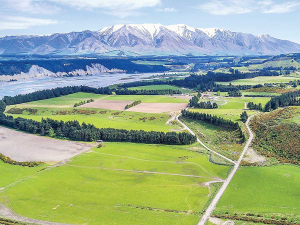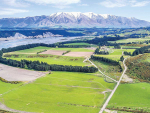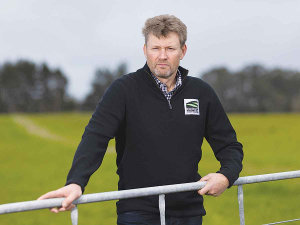Recently released data from the Real Estate Institute of New Zealand (REINZ) shows there were 77 fewer farm sales for the three months ended November 2023 than for the three months ended November 2022.
Overall, there were 188 farm sales in the three months ended November 2023, compared to 157 farm sales for the three months ended October 2023 (+19.7%), and 265 farm sales for the three months ended November 2022.
In the year to November 2023, 1,085 farms were sold, 488 fewer than were sold in the year to November 2022, with 35.8% fewer dairy farms, 9% dairy support, 29.8% fewer grazing farms, 34.2% fewer finishing farms and 35.8% fewer arable farms sold over the same period.
The median price per hectare for all farms sold in the three months to November 2023 was $32,340 compared to $32,765 recorded for the three months ended November 2022 (-1.3%). The median price per hectare increased 8% compared to October 2023.
Three regions recorded an increase in the number of farm sales for the three months ended November 2023 compared to the three months ended November 2022, with the most notable being Waikato (+7 sales) and Auckland (+5 sales). Bay of Plenty ( -16 sales) and Manawatu-Wanganui ( -14 sales) recorded the biggest decreases in sales.
Compared to the three months ended October 2023, 7 regions recorded an increase in sales, the most notable being Waikato (+21 sales) and Canterbury (+8 sales).
Shane O’Brien, rural spokesman at REINZ, says the November results show a compelling story as buyers adjust to the reality of higher interest and lower product prices as a result of tougher international trading conditions.
“The recent increase in the expected Fonterra payout was well received in the market but did little to offset the headwinds being faced by the major meat companies, as farmers are faced with lower product prices across most sectors as well as increasing farm costs,” O’Brien says.
He says buyers had an abundance of choice across all regions and farming sectors during the traditional Spring selling season this year.
However, he says buyers are taking a cautious approach to purchasing decisions as they weigh up long-term expected interest rates and farm income.
“This discerning approach by buyers has seen a lower-than-normal clearance rate with a higher number of properties remaining unsold as the year closes out compared to previous years,” O’Brien says.
“The median sale prices are holding which indicates that there appears to be a flight to quality as buyers show they are prepared to pay for good well-presented properties that meet production and environmental requirements,” he explains.
The notable decrease in sales activity on the East Coast of the North Island due to weather events, and the decrease in horticulture and forestry land was widely anticipated and in line with previous months’ trends.
A number of dairy support properties across New Zealand met with lower buyer inquiry as buyers balance controlling their grazing and feed systems with higher interest costs and lower payouts.
A reduction in sales volumes in Canterbury and Southland has seen these traditionally active Spring markets see a number of properties remain unsold. The Waikato area has had a slightly busier spring market although volumes remain back on previous years.
In November 2023, finishing farms accounted for a 38% share of all sales. Grazing farms accounted for 20% of all sales, Dairy farms accounted for 14% of all sales and Dairy Support farms accounted for 12% of all sales. These four property types accounted for 83% of all sales during the three months ended November 2023.



















